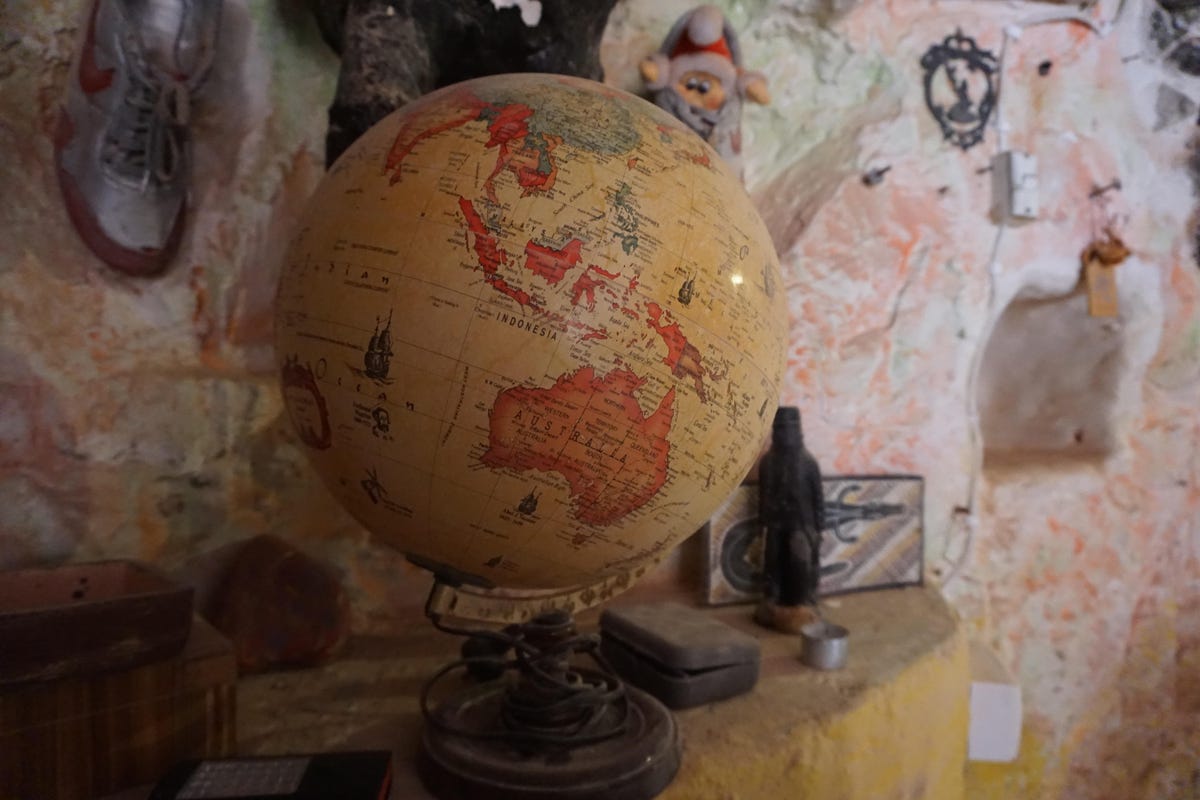The strange underground homes in the middle of the Australian desert
Here's what happens when mining for opals has the added benefit of expanding the bedroom.

Going deeper underground
More than half the people of Coober Pedy, an opal mining town in the center of the South Australian desert, live underground to survive the scorching summer heat and freezing winters. Their homes -- built into caves, hills and old mine shafts-- stay a pleasant 23 degrees Celsius (73 degrees Fahrenheit) all year round.
The heart of opal country
Over the decades, miners have flocked to Coober Pedy to try their luck digging glasslike, rainbow-colored opals, many of them building homes -- known as dugouts -- in the space left behind from mining. One of the most famous dugouts in town is Faye's Underground Home, a quaint '70s home built into the dusty hills just outside the main town.
Faye's Underground Home
Most dugouts, like Faye's Underground Home, do away with square rooms and traditional architecture in favor of round walls, narrow corridors and cosy nooks built into the rock.
Faye's Underground Home
Faye's Underground Home was built by three women over a 10 years, from 1962 to 1972. Faye Nayler, Ettie Hall and Sue Bernard mined for opals and dug out rooms as they went. The women opened the house to tourists in 1972. The home remains in its original condition.
Faye's Underground Home
Despite the Flintstones feel of the bare rock walls, Faye's dugout still shows signs of the lives of the women who lived there.
Faye's Underground Home
The original furnishings are still intact -- note the notch cut out of the wall to make space for the dresser mirror.
Faye's Underground Home
The master bedroom in Faye's Underground Home is 8 meters (26 feet) below ground level and comes complete with a hand-dug air shaft in the ceiling. According to local guide Grant Steele, the women wired the house themselves -- "fair dinkum women's power."
Faye's Underground Home
Down the stairs from the dining room and past the boomerangs on the wall is the main entertaining area and bar.
Faye's Underground Home
The highlight of Faye's Underground Home is the swimming pool, where Faye entertained guests. Her home was a favorite venue for local events.
The Old Timer's Mine
The Old Timer's Mine was owned by the local Gough family until early 2018. In 1968, Ron and Jenny Gough started digging out a new bedroom for their second baby, and discovered an old mine underneath the house, dating back to 1916. Now the Old Timer's Mine is open to tourists who can see the mines in their original condition beneath the home, as well as the dugout home above it. The family's furniture and photos are from the 1960s.
The Old Timer's Mine
In the early days of Coober Pedy, locals relied on provisions coming into town once a week.
The Old Timer's Mine
Like Faye's Underground Home, the Gough family home at the Old Timer's Mine was wired with electrical cables bolted onto the bare rock.
The Underground Art Gallery
A bunker-like entrance on the main street of Coober Pedy leads the way to a labyrinthine art gallery buried underground.
The Underground Art Gallery
Andy Sheils runs Coober Pedy's Underground Art Gallery, selling local indigenous art as well as opals that he polishes in a workshop in the corner of the gallery. In his spare time, Sheils volunteers for the local mine rescue crew.
Mine Rescue
Inside the Underground Art Gallery, Andy Sheils displays an old mine rescue sign. In June 2018, three weeks before we visited the gallery, Sheils and his team rescued a man who'd fallen down a 50-foot-deep mine shaft while searching for opals at night. The man escaped with a broken ankle.
The Underground Art Gallery
Art lines the sandstone walls of the Underground Art Gallery.
Explosive extensions
A byproduct of Andy Sheils' search for opals over the years: additional space for the gallery. Blasting out holes in the walls with explosives, he searches for seams of opal to dig out by hand, opening up space that's converted into an extra corridor or a spare room.
The Underground Art Gallery
The central room of the Underground Art Gallery was once the master bedroom of Sheils' home.
Crocodile Harry's
Crocodile Harry's is an oasis of weirdness in the middle of the Coober Pedy desert. About four miles out of town, down a winding back road, it's the home of a croc hunter and local legend who lived here in Coober Pedy's boom times. The dugout is now a relic showing what extreme life looked like in the mining heyday.
Crocodile Harry's
Sam Nagy's family owns and runs Crocodile Harry's -- tourists' donations go toward the diesel the family uses to power their own dugout (just behind Harry's), which is completely off the grid. The family has some solar panels installed, but most of their power comes from diesel, which makes running power-hungry appliances expensive.
Crocodile Harry's
Crocodile Harry's is a rabbit warren of cavelike rooms, twisting and turning through the rock with no apparent care for symmetry or traditional architectural design.
Crocodile Harry's
Crocodile Harry's appeared in "Mad Max 3" as the home of Jedediah, the mad pilot. Now, the white-painted walls are lined with artwork, messages and clothing left by people who visited over the years.
Crocodile Harry himself
An old photo, taped to the wall, shows Crocodile Harry in his prime, wrestling a croc.
Crocodile Harry's
The kitchen/dining room near the entrance of Crocodile Harry's, complete with humble appliances and electrical wiring strung across the rock.

Crocodile Harry's
Shelves are built into the rock walls, holding decades' worth of ephemera.
Crocodile Harry's
The "master bedroom" at Crocodile Harry's -- complete with underwear hanging from the walls.

